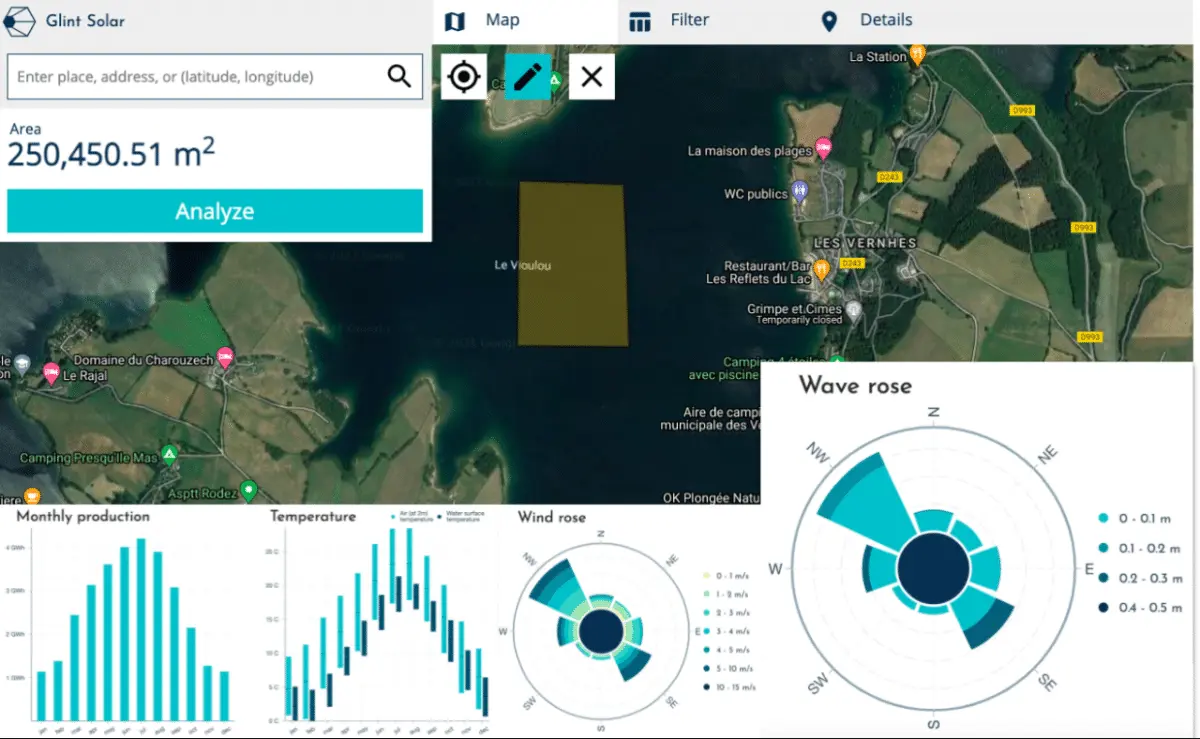New Tech to Identify Best Locations for Floating PV
The Norwegian Geotechnical Institute (NGI) and Norway-based technology company Glint Solar have jointly developed a technique for the assessment of wind and wave conditions at locations where floating PV arrays have to be deployed.
"We have made a model that uses satellite-derived wind data and the shape of the lake to calculate the fetch in multiple directions and locations to calculate the wind waves," Glint Solar COO, Even J. Kvelland, told PV magazine. "Glint Solar has used the algorithm and the model with several customers like the World Bank to calculate waves on potential project sites."
The technique is based on an algorithm that considers the geometry of the water surface and 40 years of data on wind conditions and is claimed to be able to automatically calculate wave heights and wind directions. "Given the importance of high-quality data in the early phases of floating solar projects, we are now able to help developers and consultants better understand the potential risks at individual sites as regards waves," Kvelland further explained. "Waves of course greatly impact the technical feasibility of a site and what type of floating solution one can use."
The tool is said to drastically speed up the analysis process and to be able to take into account multiple factors. "When we talk about waves, it's not only the height that matters but also the direction, wave periods, significant wave height, and 50-year wave height that are important to understand when assessing potential project sites," the COO specified. "We see an increase in new solution providers who are making more and more robust floating solutions that can withstand higher waves."
According to him, companies like Ocean Sun, Oceans of Energy, SolarDuck and Moss Maritime are all introducing solutions that can withstand rougher weather, including higher waves. "Some of them are designed to withstand waves up to 3-4 meters," he added.
The NGI has a long experience in wave analysis for the aquaculture sector and the oil and gas offshore industry. "However, this is the first time the institute is automating its technology and hence giving the wave analysis instantly," Kvelland stated.

"We have made a model that uses satellite-derived wind data and the shape of the lake to calculate the fetch in multiple directions and locations to calculate the wind waves," Glint Solar COO, Even J. Kvelland, told PV magazine. "Glint Solar has used the algorithm and the model with several customers like the World Bank to calculate waves on potential project sites."
The technique is based on an algorithm that considers the geometry of the water surface and 40 years of data on wind conditions and is claimed to be able to automatically calculate wave heights and wind directions. "Given the importance of high-quality data in the early phases of floating solar projects, we are now able to help developers and consultants better understand the potential risks at individual sites as regards waves," Kvelland further explained. "Waves of course greatly impact the technical feasibility of a site and what type of floating solution one can use."
The tool is said to drastically speed up the analysis process and to be able to take into account multiple factors. "When we talk about waves, it's not only the height that matters but also the direction, wave periods, significant wave height, and 50-year wave height that are important to understand when assessing potential project sites," the COO specified. "We see an increase in new solution providers who are making more and more robust floating solutions that can withstand higher waves."
According to him, companies like Ocean Sun, Oceans of Energy, SolarDuck and Moss Maritime are all introducing solutions that can withstand rougher weather, including higher waves. "Some of them are designed to withstand waves up to 3-4 meters," he added.
The NGI has a long experience in wave analysis for the aquaculture sector and the oil and gas offshore industry. "However, this is the first time the institute is automating its technology and hence giving the wave analysis instantly," Kvelland stated.






